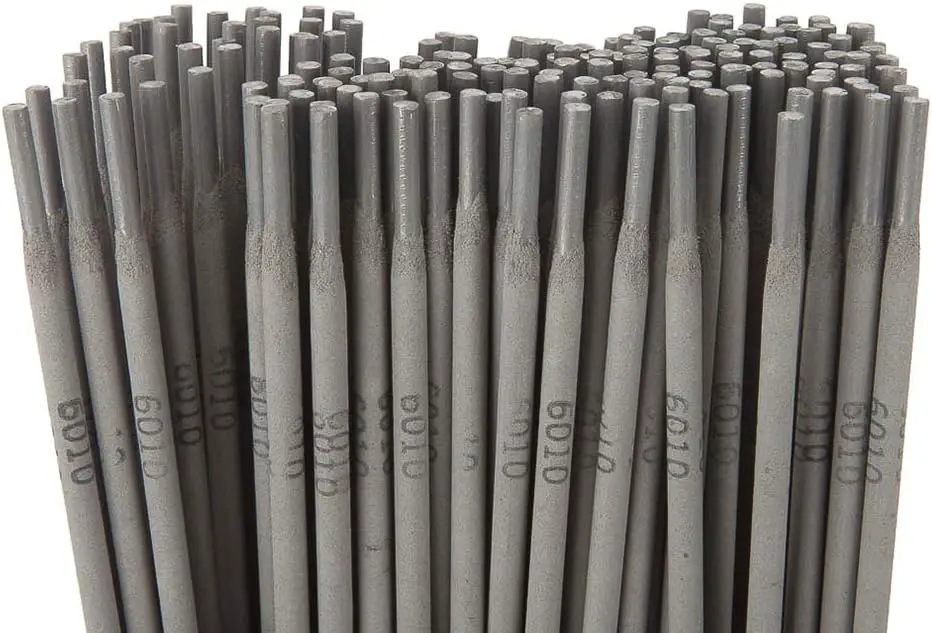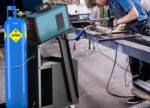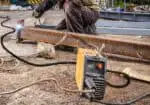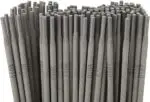Welders with experience understand that different welding rods (electrodes) are best suited to different types of welding. And since cast iron is a difficult metal to weld, several welding rods are available for malleable and nodular iron.
One concern with welding cast iron is that, because of its stiffness and breaking potential, the tendency is toward steel. Cast iron, however, is an easy task for welders who know how to deal with it.
When selecting electrodes for welding cast iron, three variables should be considered- cost, machine capability, and whether the weld requires multiple or single passes.
When welding cast iron, it is critical to use a rod developed particularly for this material to avoid incorrect fusion. Essentially, you need to select electrodes and wires that are soft, machinable, and contain a high percentage of metals such as nickel or copper.
If the amount of metal in the electrodes is satiable, you will obtain precisely what you need- strong welds.
Different types of welding rods
1. Nickel alloy- The preferable rods for welding cast iron are those with a high nickel content, out of the three options indicated above. Many of those rods will be up to 99% nickel alloy. This makes them pricey, therefore some welders may choose a less expensive solution.
2. Cast iron covered rods- These rods are widely accessible and may produce highly good ductile and machinable welds. Welds formed with cast iron coated rods are also easier to clean, but greater care must be taken to prepare and pre-heat them.
3. Steel rods- Steel rods may be used to weld cast iron, however they generate harsh, machinable welds. This also makes the weld difficult to clean. However, they are popular due to their inexpensive cost.
What are the considerations to be made before we choose a welding rod?
1.) The appropriate metal
• First, depending on the graphite shape, ensure that the cast iron you’re using is weldable.
• Cast iron typically has a carbon percentage of 2% to 4%, which is approximately ten times that of steel. This is why graphite flakes are commonly found in cast iron components, and they are responsible for the grey hue inside weld fractures.
2.) Electrode characteristics
• The optimum rod for cast iron is soft, machinable, and includes high amounts of metals like copper or nickel, which can withstand the phosphorus created during the cast iron welding process.
• The 99% nickel-based electrodes create machinable welds, making them the optimum choice for castings with low to medium phosphorus levels.
• 55% nickel rods, which are mostly used for fixing big portions, are a more cost-effective choice.
• Steel rods are the third alternative, and they are ideal for basic repairs and fillers. These are also ideal for arc welding since they can handle polluted castings.
3.) Welding methods to employ
• In truth, arc welding is a fantastic, adaptable process for melting steel by welding cast iron. The rod will melt the base steel, allowing the cast iron to flow through it and place base steel through the weld.
• MIG is the second-best welding procedure, however it is less adaptable than arc welding.
• TIG welding is another option for cast iron. It can help you join cast iron components, but you must be careful since it is simple to make a mistake. However, TIG welding is not regarded as a viable method for cast iron welding.
• For cast irons, you may also try gas welding (particularly, Oxy-acetylene fusion). It’s machinable, has a good color match, and cools slowly. Gas welding warms the cast iron more slowly than arc welding, and the flame temperature is lower than that of an arc.
This means that carbon migration is usually not a concern. The only major disadvantage of gas welding cast iron is the amount of heat required when the components are substantial. Gas welding is also a time-consuming technique.
Recommended rods for welding cast iron
1.) Hobart 770479 7018 Stick
The Hobart welding rod is an excellent choice for a novice welder since it is inexpensive and burns quite well. They don’t have the premium properties of some of the other brands, but they’re a good place to start.
Overall, these rods are fairly long-lasting. The rod tubes keep moisture out and keep the atmosphere safe.
2.) Lincoln Electric 1/ 8” 7018 MR Welding Rods
Lincoln Electric 7018 is one of the most often used electrodes in the cast iron welding specialty. The rod may be vulnerable to exposure due to its low hydrogen concentration.
In essential applications, the Lincoln 7018 should only be exposed to air for a short period of time before becoming faulty.
If your project requires welding inspection, it is recommended to store it in a rod oven until you need it to preserve both the rods and their flux.
On the other hand, in basic, non-critical applications, this type may withstand prolonged exposure before being degraded.
The Lincoln 7018 electrodes are moisture-resistant and difficult to break down, making them suitable for a variety of stick welding operations.
3.) Forney 31610 E6010 Welding Rod
The Forney 6010 is an all-position welding rod that can weld through practically any pollutant, including grease, oil, rust, like all other 6010 electrodes. Forney 1/ 8″ 6010 may be used without first cleaning or grinding the material.
The Forneys are also great for vertical downhill and uphill welding. Working from top to bottom yields the finest weld.
Because they are widely used to perform the root pass weld on pipe junctions, these electrodes are also a suitable choice for professional welders.
4.) Hobart 770470 6013 Stick
The Hobart 6013 welding rod is compatible with all polarities, including DC+, DC-, and AC. The Hobart 1/ 8″ 6013, like the 6010 and 6011, can easily penetrate rust, oil, galvanized coatings, and mill scale.
The Hobart welding rods are intended for use in a variety of locations. The rods’ arc process is fairly smooth, making it easy to weld metal in unusual places.
FAQs-
1. Can you use stainless steel rods to weld cast iron?
Although stainless-steel rods may be used to weld many metals together, they are not suitable for cast iron. Iron and much more chromium in the filler metal interact with carbon from the cast during welding.
As a result, brittle carbides form, increasing the danger of breaking. The nickel in the rod cannot compensate for the unfavorable consequences.
2. What is the best method for welding cast iron?
Arc, MIG, and TIG welders are the best for welding iron. Of course, you must also ensure that the appropriate rod is used.
Conclusion
If you decide to work with cast iron, look for a rod with cast iron qualities to reduce the possibility of anything going wrong during the casting process. If you are a beginner, find something inexpensive that you can practice on while working on your skill.











